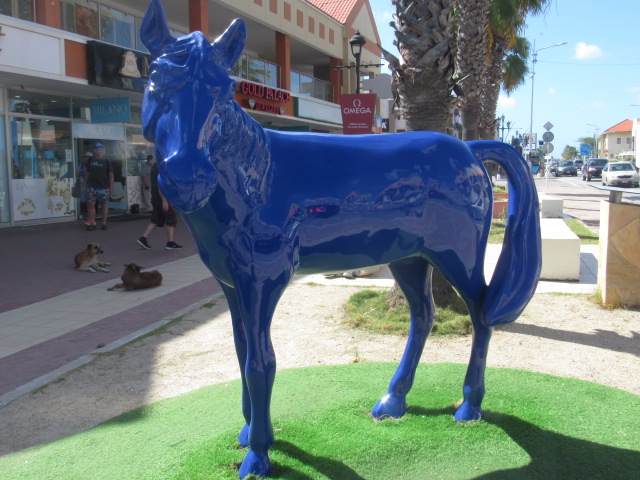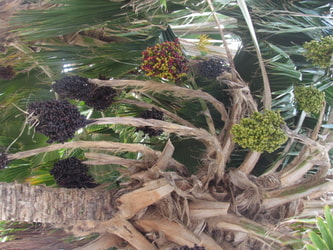Sign In
CloseI found this blue statue of a horse in Aruba and this was near the harbor. Because the information for this thing was too long for me to put in one photo, I'll just type it here from the three shots I took.
"Meet the heard: Rosalinda, Saturnina, Bonifacia, Eufrosina, Celestina, Sinforosa, Escapia, and Ambrosio. Eight horses revisiting us from our memorable past, claiming their nearly forgotten place in history.
Paardenbaai embodies an important part of the early history of Oranjestad; the natural harbor facilitated horse trade that dates back to the early days of Spanish colonization of Aruba. This trade in livestock and primarily horses was one of the key factors in the early development of commerce and later settlement of the town at the bay. During the following three centuries, the horse trade remained important for the island: for the Spanish period during conquest (1500s), and later for the Dutch under the West Indian Company rule (1600s and 1700s). Aruba remained as what could be considered a ranch that facilitated the colonization projects. In the early Dutch Colonial period (1800s and 1900s), this role diminished and a shift to other industries and small scale farming became more important. Thus for over four centuries a great variety of livestock (primarily horses) was kept on the island where it remained accessible and could easily be transported to other destinations.
Historic accounts relate that at times the herds would count up to thousands of horses, roaming the island. Testament to the importance of this period is the simple fact from this period onwards and to this day, almost two hundred years after the official renaming of Playa Caballos to Oranjestad (1824), the town at the bay is still referred to as Playa and its residents are still known as Playeros, in the local language Papiamento.
The importance of the Caribbean Sea and the Horse Bay is also evident in the symbolic blue color of the horses, serving as a reminder of their voyage to and from the island. A deep blue color that still bathes their skin as if they seemingly just emerged from the bay pacing forward into town confronting us with the rich identity of our past.
Public art project by local artist Osaira Muyale. Funded by the government of Aruba, The Aruba Tourism Authority, and The Mondriaan Fund."
Submission Information
- Views:
- 134
- Comments:
- 0
- Favorites:
- 0
- Rating:
- General
- Category:
- Visual / Photography




